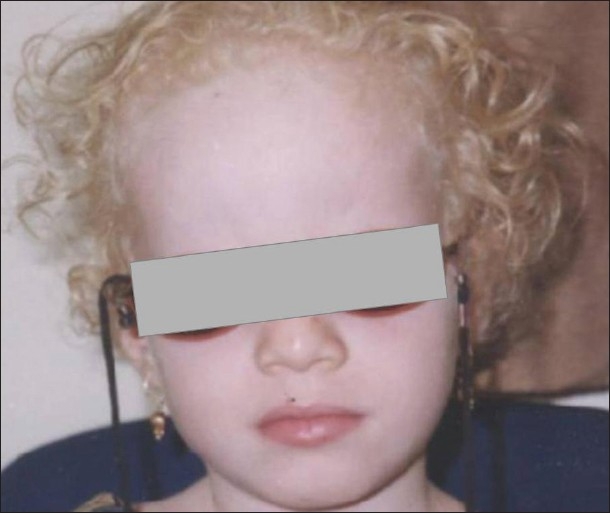Playlist
Show Playlist
Hide Playlist
Albinism in Darker Skin
-
Slides Albinism in Darker Skin.pdf
-
Download Lecture Overview
00:00 Welcome to our lecture on albinism. 00:05 Albinism is a group of inherited disorders affecting the production of melanin and resulting in depigmentation. If one looks at the epidemiology of albinism, it's got a global incidence of about one in 20,000 people. 00:24 Tanzania hosts the largest rate of people with albinism worldwide. 00:29 In terms of gender, both males and females can be can have oculocutaneous albinism. 00:37 However, ocular albinism only affects males. 00:42 It does affect all races, so we see albinism both in skin of color patients and light-skinned patients. 00:51 But it's much more conspicuous in skin of color patients. 00:55 So what is our understanding of the pathophysiology of albinism? Albinism results from inherited genetic mutations. 01:05 And there are two major types The oculocutaneous albinism, and the second type is ocular albinism. 01:13 If one focuses on oculocutaneous albinism, I'll refer to this as OCA. 01:19 There are eight subtypes. 01:21 The autosomal recessive inheritance pattern. 01:25 This results from mutations in the genes responsible for different components of the melanin synthesis pathway. 01:32 We spoke about the melanocytes and melanin synthesis in our other lectures. 01:39 If you look at ocular albinism, there are two subtypes, one caused by gene mutations with X-linked inheritance pattern. 01:50 So let's have a quick look at the pathophysiology of albinism. 01:55 There's impaired melanin biosynthesis in melanocytes due to the complete lack of tyrosinase enzyme activity. So this leads to impaired melanin biosynthesis in the Melanocytes and as a result there's absence or decreased melanin. 02:19 This results in hyperpigmentation of skin, hair and eyes. 02:26 So in a nutshell that is the pathogenesis of albinism. 02:33 So how does albinism present . 02:39 Ocular albinism. Here we get decreased pigmentation of the iris and retina. 02:48 Leading to visual defects which actually present at birth with photophobia. 02:56 These patients can't look at direct light. 02:58 There's decreased visual acuity and lack of normal binocular vision. 03:04 The patients may also present with nystagmus and strabismus. 03:12 And you also get same ocular abnormalities as ocular Albinism in patients who have oculocutaneous albinism, which is the second type of albinism. 03:26 The depigmentation of skin and hair, and extreme photosensitivity. 03:33 These patients, as a result of lack of melanin, which is due to the deficiency of the enzyme tyrosinase. They get sunburns, very severe sunburns, and there is a tendency to develop pigmented nevi and lentigines. 03:54 The diagnosis of albinism is a clinical diagnosis, and genetic testing is available but is not really routinely performed. 04:04 Non-necessary. So what else can be confused with albinism? Vitiligo that we spoke about. 04:13 This occurs in specific areas. 04:15 However, we know that albinism affects this depigmentation all over. 04:21 The second differential is Waardenburg syndrome where patients may have light colored skin and hair, but usually no involvement of the eyes, and there is no vision impairment. 04:34 The third differential that one m ay actually consider is hypopigmented nevus. 04:39 This occurs at birth and is localized and not generalized like albinism. 04:46 So how do we approach the management of patients with albinism? There's no currently available cure because it's a genetic disorder and management is mainly supportive and educational. 05:00 Education is paramount because most of these patients do not understand the disease, and do not understand how crucial it is to stay away from the sun and protect themselves. 05:13 So strict protection from the sun is very, very important, particularly between 11 and 4:00 pm, which is the most dangerous time in terms of strong ultraviolet rays. Broad spectrum sunscreens are essential that will protect against UVA, UVB spectrum and visible light. 05:37 Protective clothing in the form of long shed sleeves, long pants, broad brimmed hat, glasses, and covering off the neck is very crucial for patients with albinism. 05:54 As mentioned, sunglasses are also essential. 05:58 Regular skin examination every 6 to 12 months for early diagnosis and treatment of skin cancer is important. In terms of ocular manifestations, patients need to be surveilled by frequent visits to an ophthalmologist for proper examination of the eyes. 06:19 The treatment of refractive errors with glasses or contacts is also important, and surgery to correct strabismus or cataracts if needed should be recommended. 06:32 Genetic counseling to avoid inter-marriage is also an important psychosocial aspect of holistic management of patients with albinism, because there is a tendency for these patients to intermarry because they identify with each other and their community, so the high incidence of intermarriage is sometimes regrettable. 06:57 So what are some of the complications of albinism? It's associated with an increased risk of skin cancer, with squamous cell carcinoma being the most common type of skin cancer that we see. 07:09 Patients with albinism tend to age much, much, much faster than ordinary individuals with normal pigment. Traditional beliefs also need to be addressed, as in some countries it is believed that patients with albinism, their organs can be used for a traditional medicine, and this is something that in Africa it's being addressed very aggressively.
About the Lecture
The lecture Albinism in Darker Skin by Ncoza Dlova is from the course Hyper- and Hypopigmentation Skin Disorders.
Included Quiz Questions
Which statement correctly describes the inheritance pattern of albinism types?
- Oculocutaneous albinism is autosomal recessive while ocular albinism is X-linked
- Both oculocutaneous and ocular albinism are autosomal dominant
- Oculocutaneous albinism is X-linked while ocular albinism is autosomal recessive
- Both oculocutaneous and ocular albinism are autosomal recessive
- Both types show variable inheritance patterns depending on the subtype
What is the primary mechanism causing hypopigmentation in albinism?
- Impaired melanin biosynthesis
- Excessive melanin breakdown by hyperactive melanocytes
- Autoimmune destruction of melanocytes
- Decreased number of melanocytes in the skin
- Defective melanin transfer from melanocytes to keratinocytes
Which ocular finding is typically NOT present in patients with albinism?
- Color blindness
- Photophobia
- Nystagmus
- Strabismus
- Decreased visual acuity
Which skin cancer type is most common in patients with albinism?
- Squamous cell carcinoma
- Basal cell carcinoma
- Melanoma
- Merkel cell carcinoma
- Kaposi sarcoma
Customer reviews
5,0 of 5 stars
| 5 Stars |
|
5 |
| 4 Stars |
|
0 |
| 3 Stars |
|
0 |
| 2 Stars |
|
0 |
| 1 Star |
|
0 |




